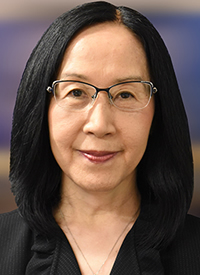Next Gen Navigator
Local Phenomena
Posted on 2020-08-27

Disclaimer: The views expressed in this blog post are those of the author(s) and do not necessarily reflect the official position of the National Science Teaching Association (NSTA).
Making Everyday Phenomena Phenomenal
Central to the vision in the Framework and the NGSS are three instructional shifts: (a) explain phenomena and design solutions to problems, (b) engage in three-dimensional learning, and (c) build coherent learning progressions over time. These instructional shifts highlight the distinction between traditional and contemporary approaches to science learning. Traditional approaches focused on individual learners’ mastery of discrete elements of science content, while contemporary approaches emphasize that students make sense of phenomena and problems as scientists and engineers do in their work. Because contemporary approaches involve using and applying knowledge for a particular purpose, they are referred to as knowledge-in-use or what knowledge does, not what knowledge is according to traditional approaches.
Making sense of phenomena and problems becomes more important with equity at the center; hence, “all standards, all students.” Traditional approaches are “flipped” to adopt contemporary approaches. In traditional approaches, scientists and science teachers defined canonical knowledge of science disciplines, which was typically presented in science textbooks. Some students learned science, but science did not make sense to many students. In contemporary approaches, all students are making sense of phenomena and problems as scientists and engineers do in their work.
The three articles in this issue highlight phenomena and problems that students experience in their homes and communities. Local phenomena promote both equity and science (Lee 2020). From an equity perspective, through place-based learning, students apply science and engineering to their daily lives in local contexts of home and community. All students bring with them a vast array of cultural and community resources that help them make sense of phenomena and problems. From a science perspective, through project-based learning, students integrate science disciplines as they investigate a driving question to explain a phenomenon and use engineering to design solutions to a problem.
Local phenomena and problems take on added significance during the COVID-19 pandemic. For remote instruction, schooling is distributed among three spaces: (1) teachers in classroom space, (2) parents and families in home space, and (3) technology in virtual space. The high school article describes the powerful role of phenomena that students decided to explore with their siblings, parents, or others.
As student diversity continues to grow and as the COVID-19 pandemic continues to shape the education system, the role of phenomena will continue to be refined for all students, especially those students who did not see science as relevant to their everyday lives or future careers.
Lee, O. 2020. Making everyday phenomena phenomenal: Using phenomena to promote equity in science instruction. Science and Children 58 (1): 74–79.

Okhee Lee
Next Gen Navigator Guest Editor
Okhee Lee is a professor in the Steinhardt School of Culture, Education, and Human Development at New York University. She was a member of the Next Generation Science Standards (NGSS) writing team and served as leader for the NGSS Diversity and Equity Team. She was also a member of the Steering Committee for the Understanding Language Initiative at Stanford University. Lee is currently leading collaborative research to develop instructional materials aligned with the NGSS in order to promote science learning and language learning of elementary students, including English learners. She is also leading collaborative research to integrate computational thinking and modeling in NGSS-aligned instructional materials.
How Teachers and Families Can Work Together During Remote Instruction
Brian Caine, coordinator of science at the Tennessee Department of Education, shares how teachers can support families in facilitating science learning for their children at home. Caine notes, “In working together as a classroom learning community or a family learning community to build on these shared experiences, we can develop deep understandings of science ideas.” Read more.
How Phenomena Can Promote Student-Centered Learning
Sixth-grade math and science teacher Tyler Scaletta discusses how anchoring students’ science learning in relevant, engaging phenomena can encourage students to come together as a community of learners, ready to share, question, and investigate their prior conceptions to develop skills and uncover new understandings. Read more.
Enhancing Students’ Science Learning Using Phenomena
High school STEM teacher Will Reed shares how phenomena-driven science classrooms can provide students access to real science and inclusive learning. Read more.
Note: The Next Gen Navigator is a monthly e-newsletter from NSTA delivering information, insights, resources, and professional learning opportunities for science educators by science educators on the Next Generation Science Standards and three-dimensional instruction. Click here to sign up to receive the Navigator every month.
The mission of NSTA is to promote excellence and innovation in science teaching and learning for all.
NGSS Phenomena Professional Learning old Teaching Strategies Three-Dimensional Learning


